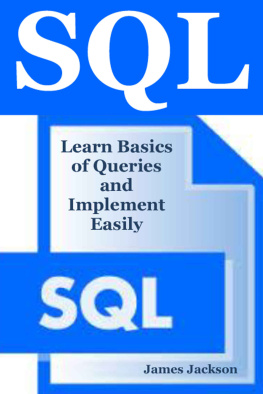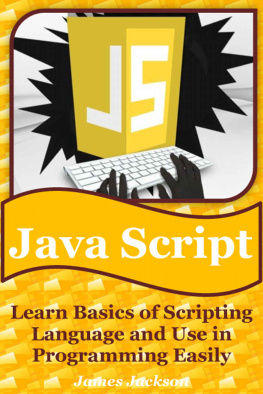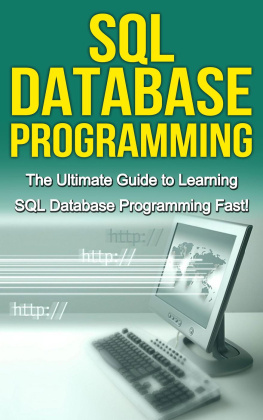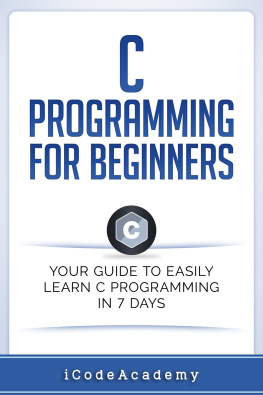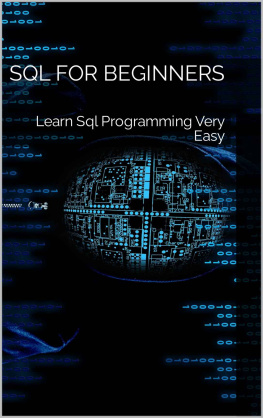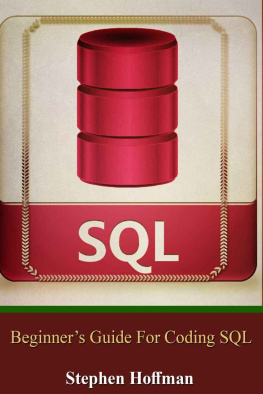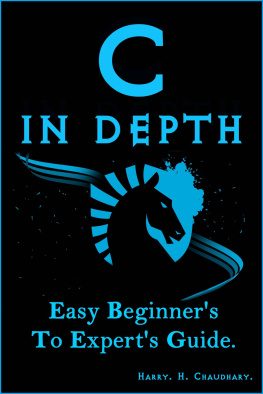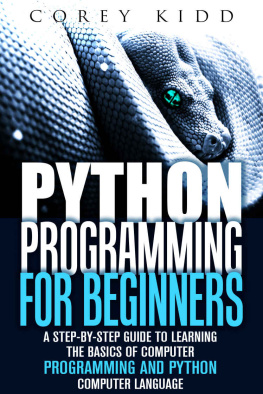SQL
Learn Basics of Queries and Implement Easily
James Jackson
Table of Content
Introduction
SQL is the standard language used for retrieval and manipulating databases. SQL stands for Structured Query Language. It is one of the programming languages that is developed for managing data which is stored in a relational database management system (RDBMS).
SQL language operates through use of declarative statements, by this access it ensures that the data is accurate and secure, it also helps maintain the integrity of databases, no matter its size.
SQL is widely used today across most web frameworks and database applications. Understanding SQL gives you the liberty to explore data, and make better decisions. One of the benefits of learning SQL language is that, you also learn concepts that are similar to nearly every RDBMS.
Relational Database Management Systems (RDBMS)
RDBMS stands for Relational Database Management System. It is the basis for SQL, and all modern database systems such as Oracle, MS SQL Server, MySQL, Sybase, Informix, postgres, IBM DB2, and Microsoft Access. This data in RDBMS is basically stored in database objects called tables. The table is usually a collection of related data entries which consists of columns and rows.
Also RDBMS is a program that will let you create, administer and update a relational database. Most importantly these relational database management systems will use SQL language to access the database in question.
The similarities between these different RDBMS are many since they tend to use the same concept, although the SQL syntax may end up being somehow slightly different with the RDBMS you are using.
To start off, its wise to have an idea of some of this popular RDBMS in the databases world.
MySQL
This stands as the most popular of the open source SQL databases. It is used for web applications development by developers and system administrators, and its most often accessed using PHP.
With the main advantages of MySQL being in its ease of use, reliability and also cost effective, it has a resourceful large community of developers ready to help the newbies or also when stuck in code implementation..
It also have its shortcomings as it is known to suffer from performance which is poor especially when scaling. The open source development has declined since Oracle took its control with also some advance features missing altogether in MySQL limiting developers options.
SQLite
SQLite is an open source SQL database which is popular for its size. It is so small and can even store a whole database in a single file. One of its major advantages is that all of its data can be conveniently stored locally without a need to connect the database to a server.
This database system is most popular due to its light weight, and thus a better choice for database use in cell phones, set-top boxes, MP3 players, PDAs and many other electronic gadgets. It facilitates faster database queries and data manipulations as well.
PostgreSQL
PostgreSQL is one of the open source SQL database which is not controlled by a company. PostgreSQL is famously used in the web application development due to its low cost and ease of use.
It is so similar MySQL database having the same advantages and being that its not owned. It is one of the most easy to use database in addition to being, cost effective and reliable database system supported by a large community of developers available in case you get stuck. PostgreSQL is so flexible while it also provides some of the features that tend miss on most database systems such as the foreign key support which require complex configuration.
It also has an advantage that it is easily integrated with other extensions such as Post GIS extension which is important when dealing with data having geometries and shape attributes. This plugin is mostly useful to the Geographic Information Systems developers storing spatial data.
One of the notable disadvantage of PostgreSQL database is its effect on systems performance, in that it is slows the performance compared to other databases for example; the MySQL database. Being less popular as compared to the more established database systems such as the MySQL database, it is a bit harder when intending to store or manage data to come across either service providers or hosts who will offer managed PostgreSQL instances.
Oracle DB
This is a corporate owned database system, the Oracle DB is owned and maintained by the Oracle Corporation it is a commercial database meaning the code is not open source, thus it must be purchased.
Oracle Database is popular in application developments which are large in size as it is mostly used for large applications, more specifically in the banking industry which stores large amounts of data. Almost all of the top banks in the world use Oracle applications as Oracle is known to offer powerful combination of technology which is comprehensive and pre-integrated into business applications. Oracle databases also include key functionalities which have been built specifically for banks.
The main notable demerit of using Oracle DB is that it is commercial and you must pay for it to use it. Oracle DB uses SQL language also although it is not open source like the other competing databases and can be very expensive when you are an individual using it for basic things say like basic site development.
SQL Server
This is a famous database system which is owned by Microsoft. Just like the Oracle DB, also the SQL Server code is not public or open sourced.
SQL Server is similar to the Oracle DB in the sense that it is mainly used by large organizations applications. The key difference between the Oracle DB and the SQL Server is that SQL Server database in only supported by the Windows Operating System as it is owned by Microsoft Corporation also.
Initially Microsoft offers a version called Express which is basically a free entry level, but as the data increases and the more you scale your application it become very expensive to maintain, as it is not free anymore.
SQL Syntax
In the SQL statements declaration all the statements start with any of the keywords like SELECT, ALTER, DROP, CREATE, INSERT, USE, SHOW , UPDATE, DELETE, and they end with a semicolon (;).
It is worth noting that SQL is case insensitive, and as such SELECT and select have same meaning in SQL statements. MySQL makes difference in table names such that if you are working with MySQL, you have to give table names exactly as they exist in the database.
Database Tables
A database contains one or more objects called tables used to store data. Each table is then given a unique name for identification (e.g. "Customers" or "Orders"). This table contains records or columns data in the rows while the columns contain the column name, data type, and other attributes there maybe for the column.
For example in this chapter we will be using Northwind sample database, freely downloadable in MS Access and Microsofts SQL Server. Make sure you have it installed if you are using MS Access (the installation is easy and straight forward see below ) i.e. for MS Access 2013;
- Open Microsoft Access 2013
- Search for "Northwind" in the "Search for Online Templates" box at the top of the screen.
- Click on Desktop Northwind Sample Database on the screen.
- Provide a name you would call the Northwind database in the File Name.
- Then click the Create button. MS Access will start to download the Northwind database from Microsoft source and prepare your copy.
- Your database will automatically launch when its ready.

